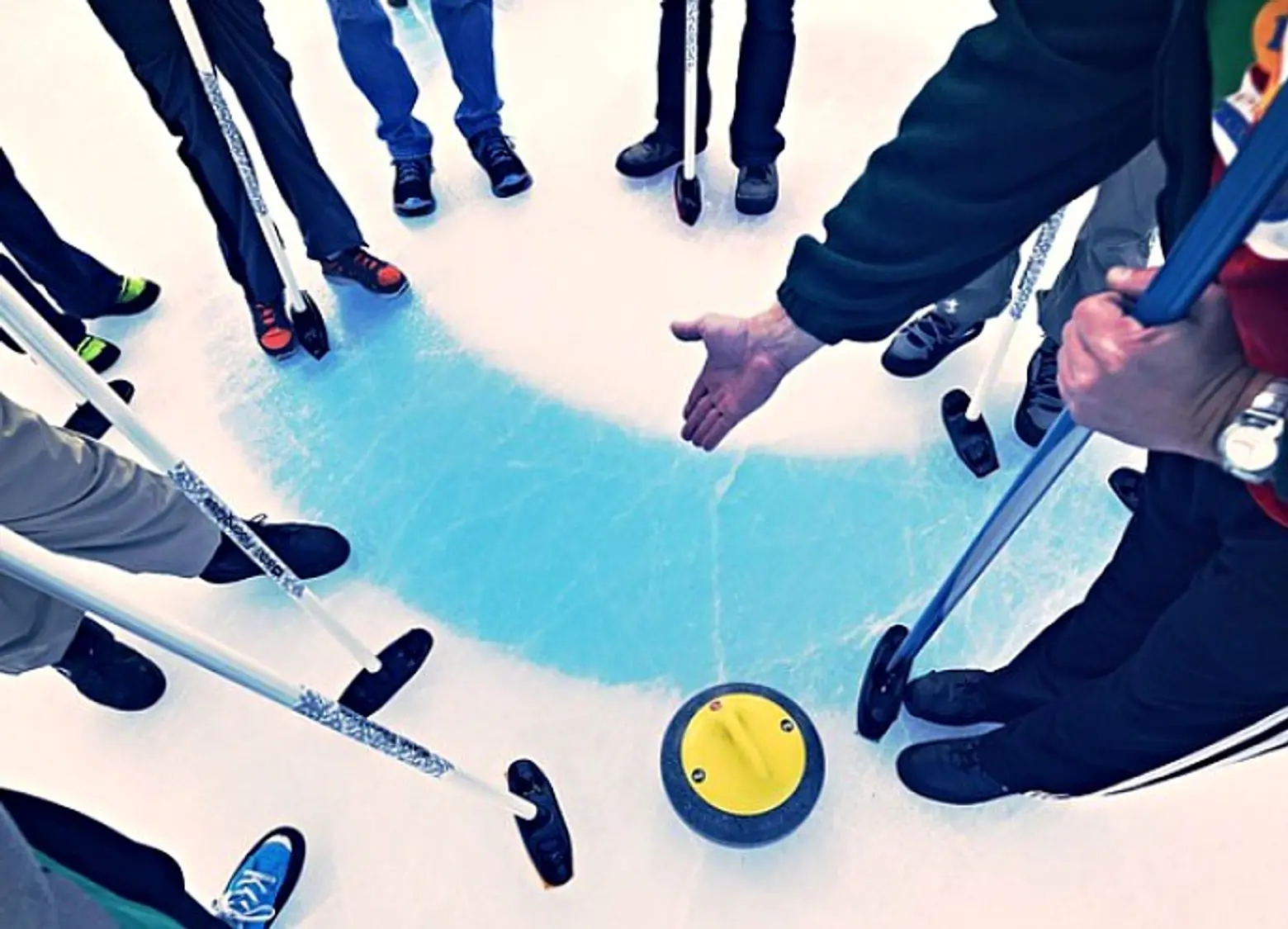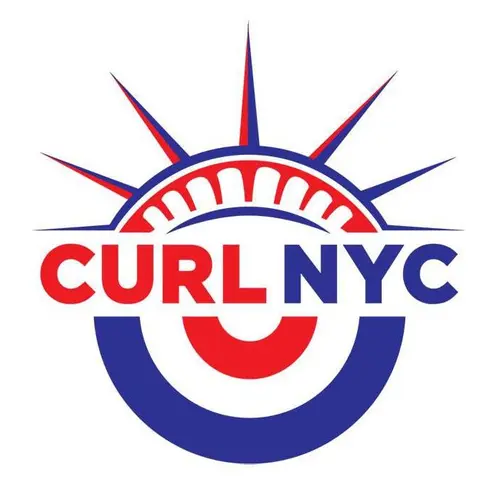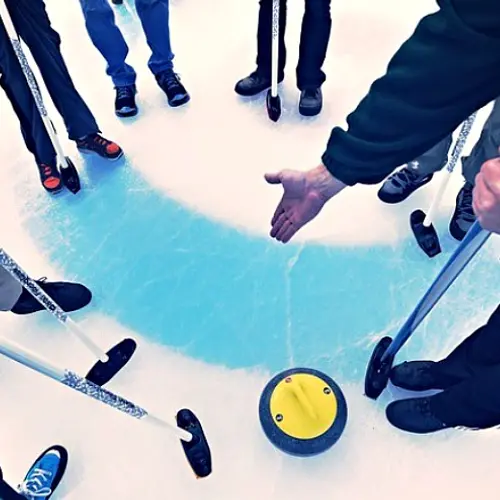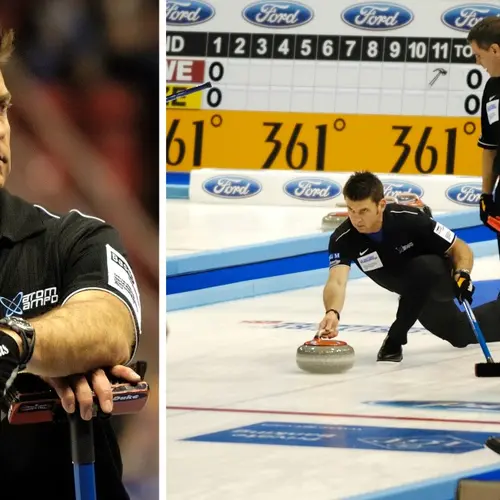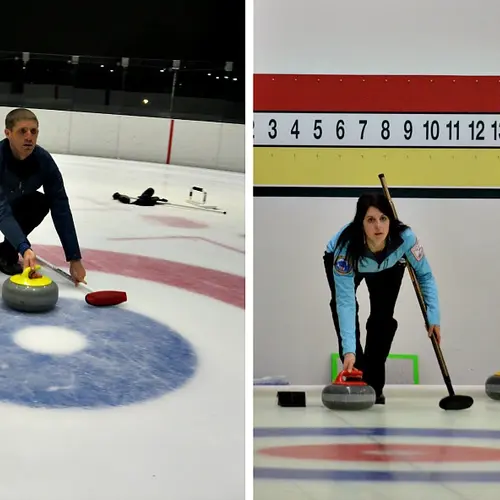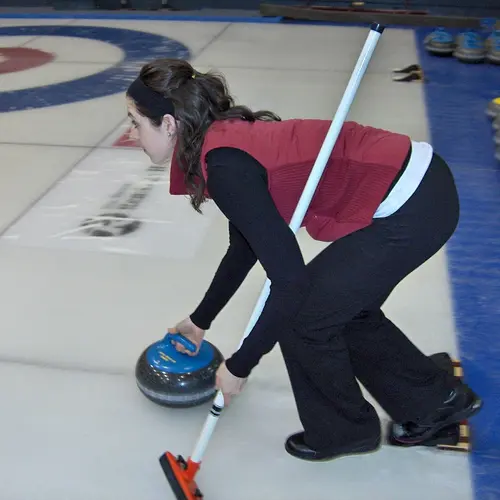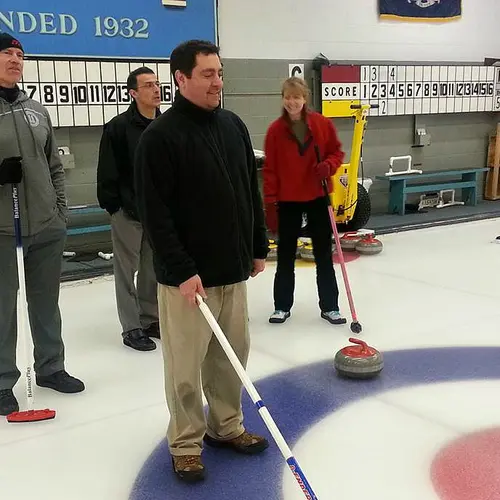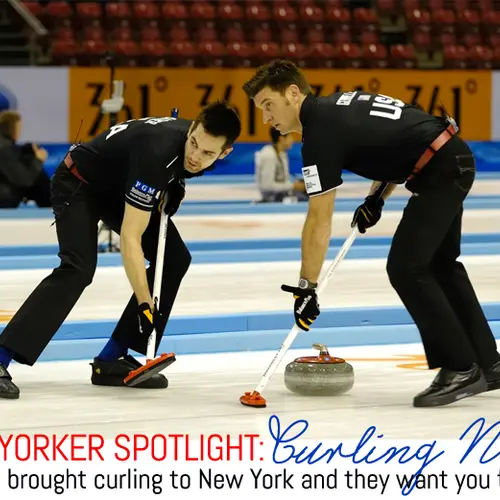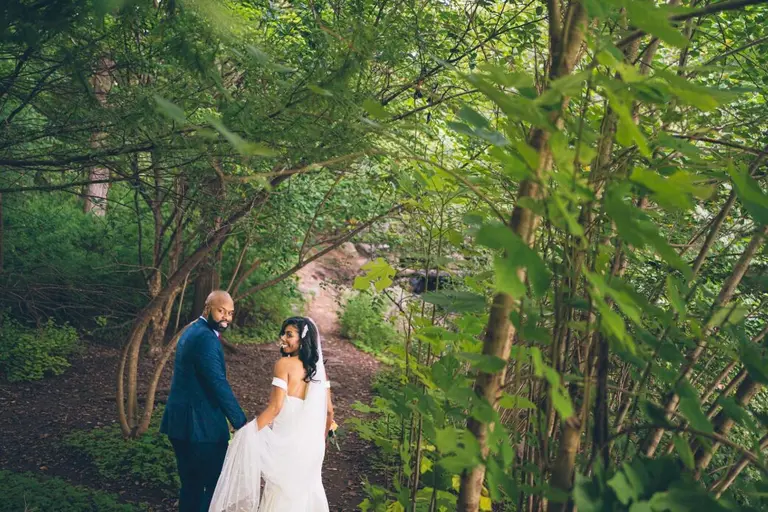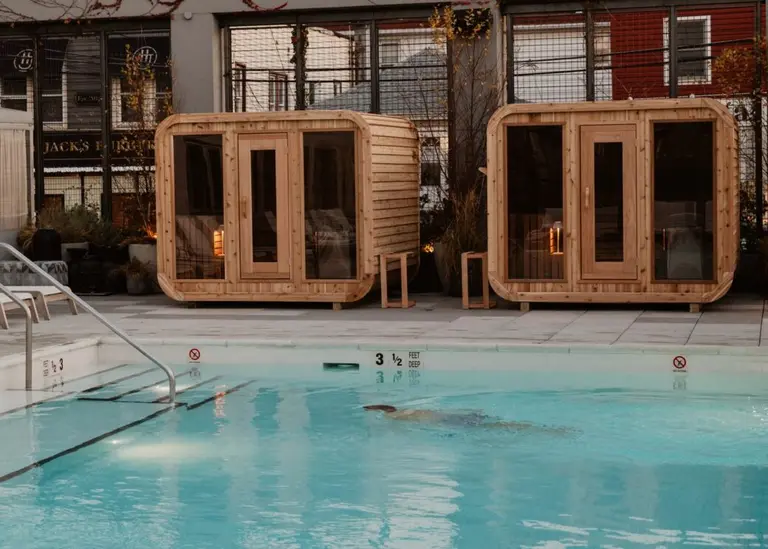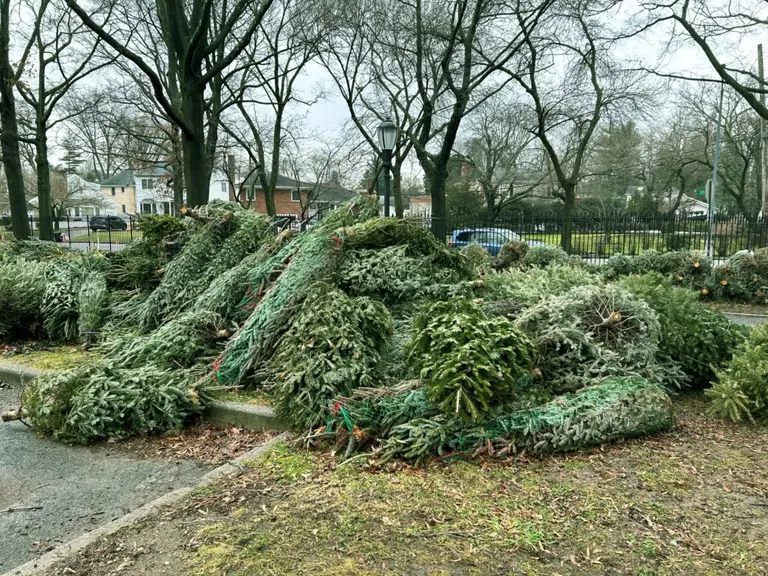New Yorker Spotlight: CurlNYC Has Brought Curling to New York and They Want You to Try It
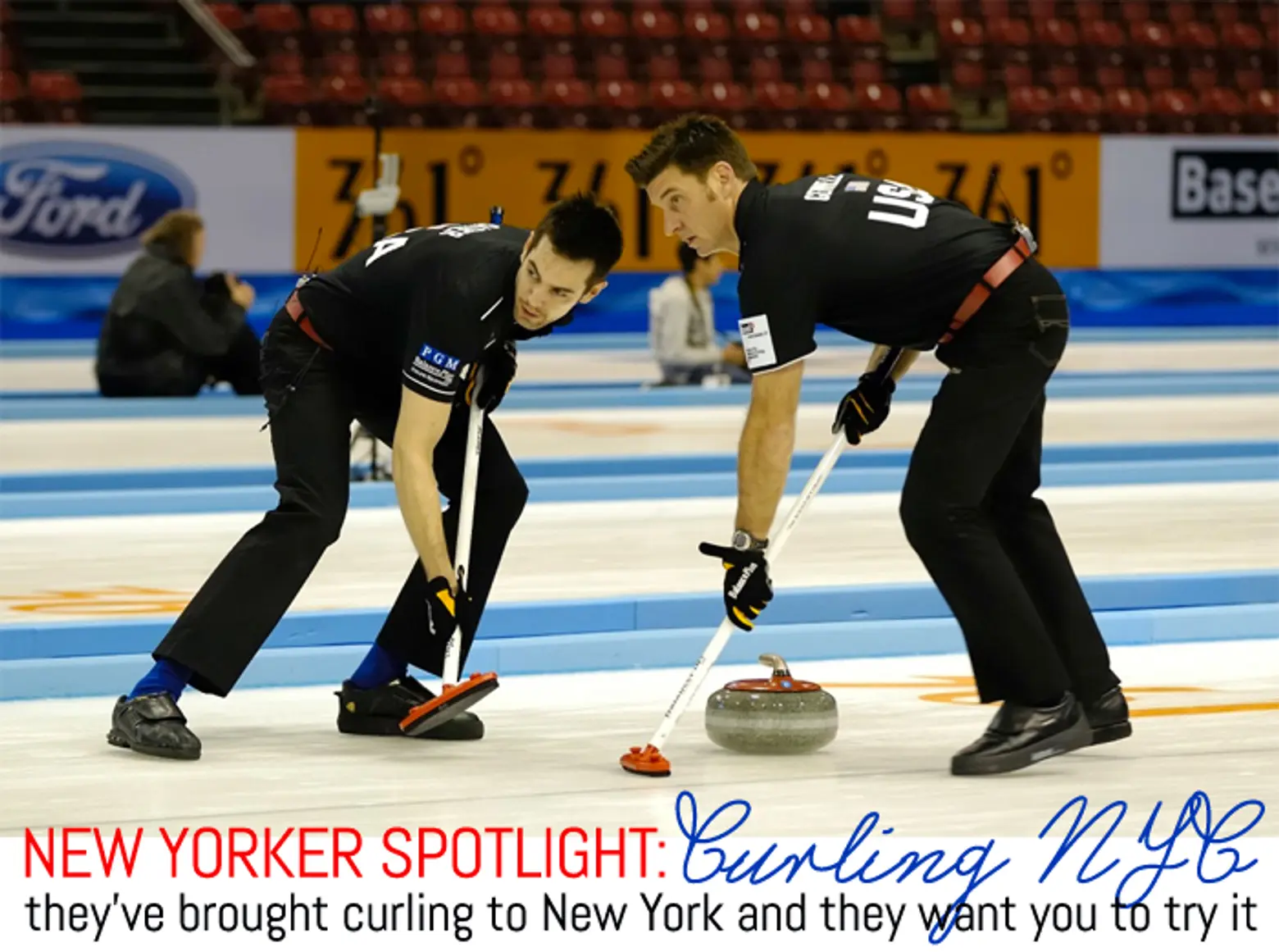
Maybe it’s the throwing, or the sweeping, or just the way the athletes yell down the ice, but something about curling intrigues us every four years during the Winter Olympics. And now, thanks to the efforts of CurlNYC, New Yorkers can try their hand at the game.
Since 2013, CurlNYC has been on a mission to get the city hooked on the sport. The visionaries behind this start-up are Dean Roth, Dean Gemmell, a former U.S. Curling National Champion who competed at the 2012 World Championships, and Chad McMullan. Their eventual goal is to build the first ice facility in the five boroughs dedicated to the sport, and they’re well on their way. Upsilon Ventures hired the group to manage the curling program at LeFrak Center at Lakeside in Brooklyn‘s Prospect Park and the South Street Seaport. CurlNYC has a roster of curling instructors, like husband-and-wife duo Luke Hansen and Kendall Speten-Hansen, to introduce the sport through demonstrations at both locations and during league play at Lakeside.
We recently spoke with U.S. National Champion Dean Gemmell and curling instructors Kendall and Luke to find out why New York and curling are a winning combination.
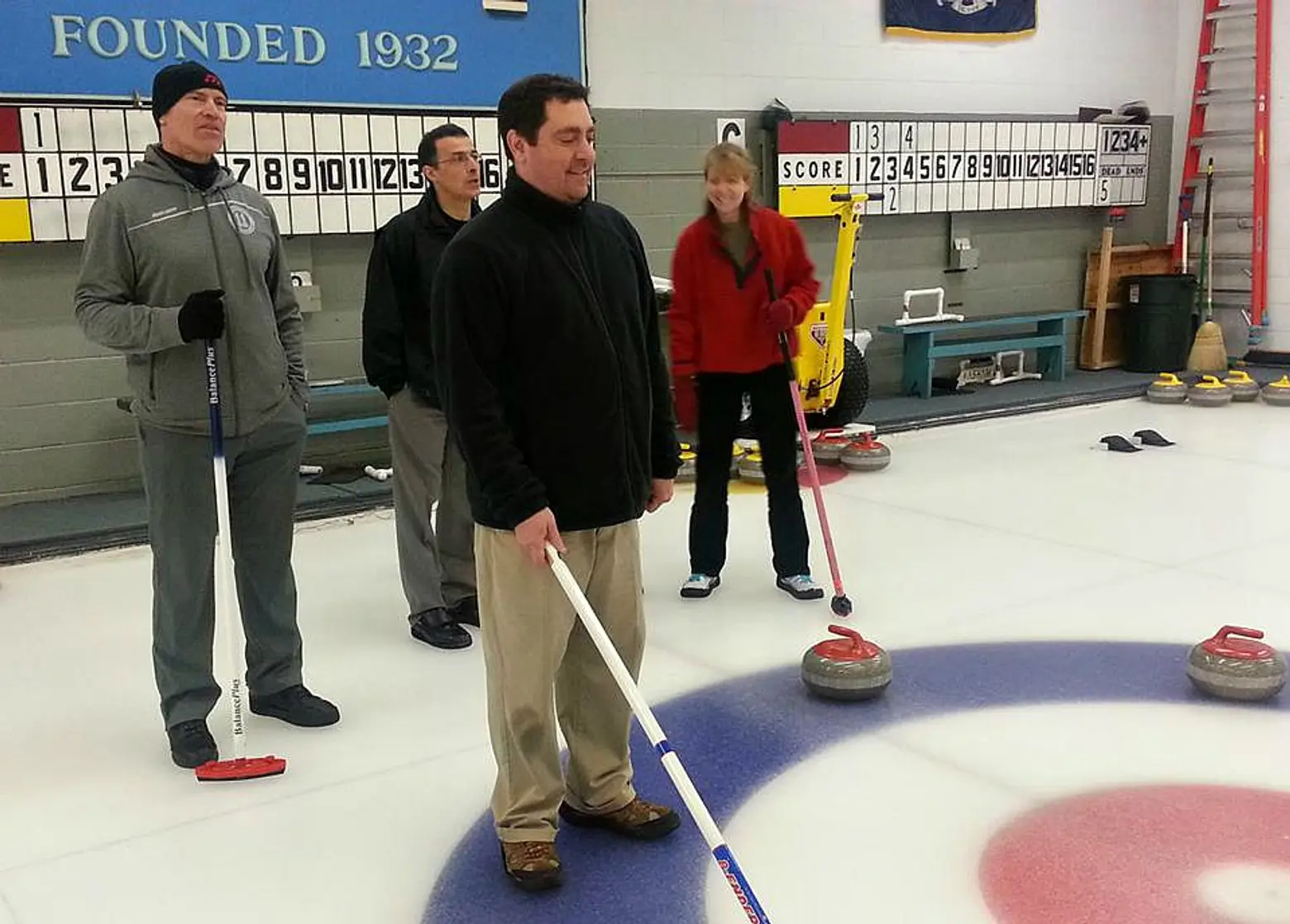
Curlers at the Ardsley Curling Club
First off, what is curling?
Dean: The stones actually do curl, which is why we call it curling. They don’t go in a straight line down the ice. Each team alternates throwing eight stones towards the target, the rings, or the house, as we call it. You’re not always putting them in the rings, but you’re plotting a strategy to score.
Luke: It’s a game of strategy. It may be cliché for curlers, but they call it chess on ice. There’s a lot of strategy as to where to put your teams’ stones and what to do with the other teams’ stones. Mainly, it’s a game of positioning the stones.
What is the makeup of a curling team?
Dean: There are four positions: lead, second, third or vice, and skip. The skip stands at the far end, the scoring end, and is reading the game, calling the shots, managing the game, and throwing the last two shots for their team. If they’re not the best shooter on the team, they have to be the most clutch player. Everybody does a little bit of everything, but the skip does the least sweeping.
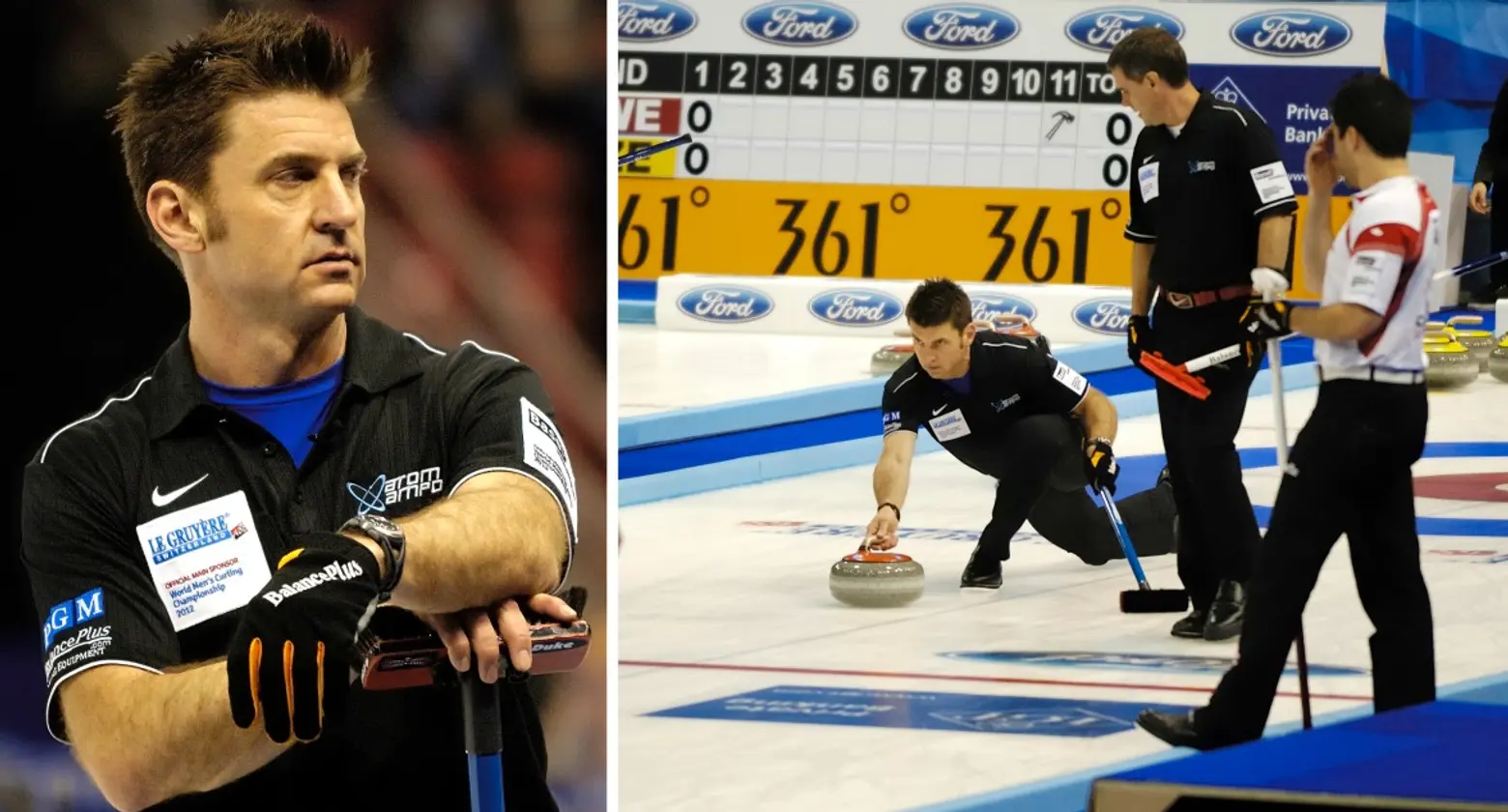
Dean Gemmell, throwing at Worlds (R)
What’s one thing about curling most people don’t know?
Dean: You’re going to be sore because it’s a weird set of movement. It’s more physical than people think.
Kendall: You can be competitive in this sport even as an adult. Luke and I are both really competitive
Dean, how did CurlNYC come about?
Dean: I was the president of the Plainfield Curling Club in New Jersey during and after the 2010 Olympics, which was a huge boost to US interest in the sport and membership in this area. Dean Roth was president for a year after I was president. We both realized that there was significant demand for the sport and that the biggest challenge in the tri-state area is the lack of facilities to play it. There are only three facilities in the area: the Plainfield Curling Club, the Ardsley Curling Club in Westchester, and the Nutmeg Curling Club in Bridgeport, CT. Obviously none of them are really convenient for New York City.
We started to look around and talk to whomever we could about curling in New York City and how we thought a facility could work. Once we heard about the Kingsbridge National Ice Center in the Bronx, we spoke to them. We’re trying to bring curling there. Anybody we heard who had a development or we heard was putting freezing water somewhere, we definitely wanted to talk to them. Of course, real estate is the biggest challenge in New York. That’s probably why so many curling clubs are in smaller towns. I’ve often thought another good opportunity would be the second floors of developments, which I know is tough because it’s not retail. Or a hipster condo in Williamsburg could have a curling facility right in it.
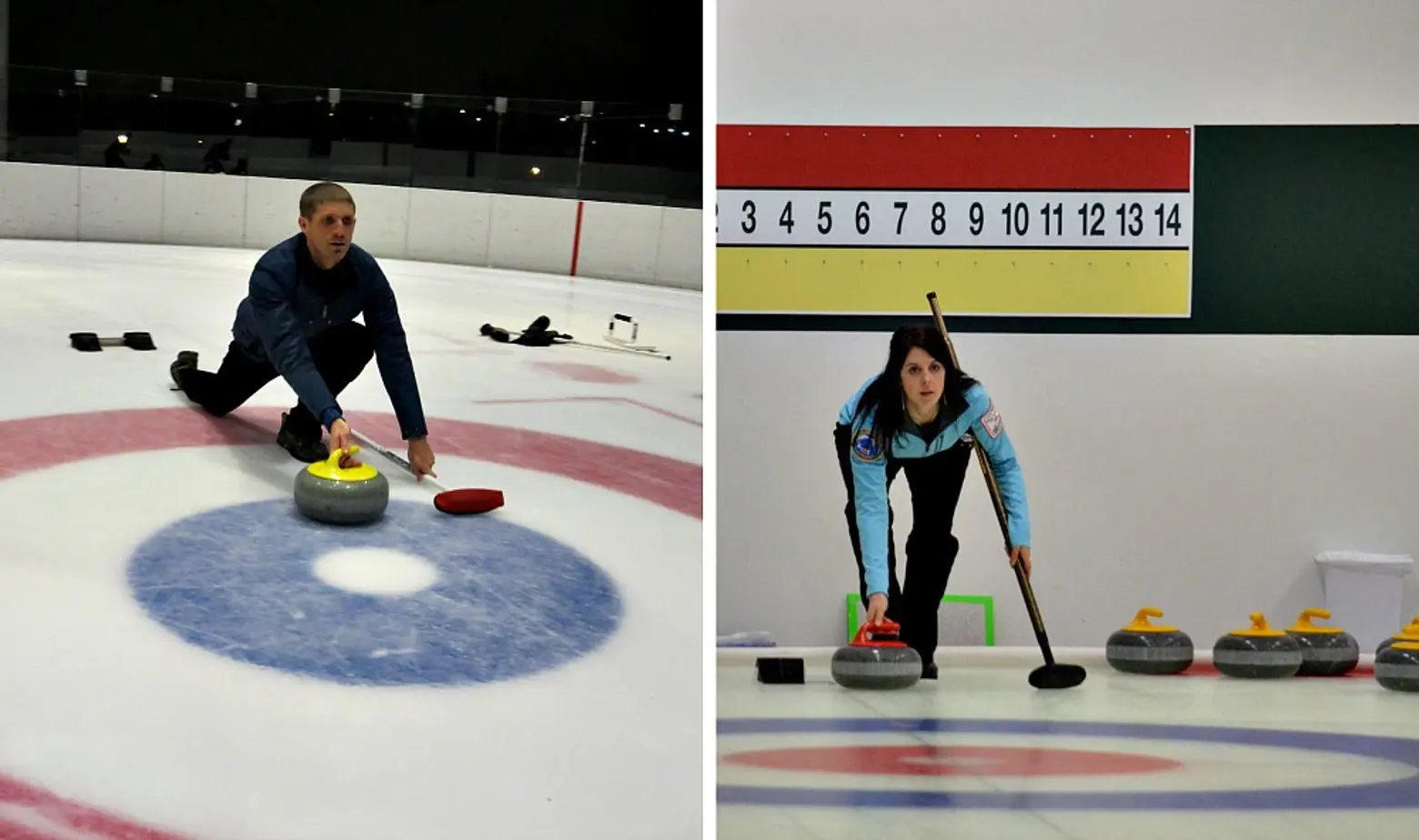
Luke and Kendall
Why is curling gaining popularity in New York?
Luke: I think for two reasons. When Kendall and I started a couple of years ago, we’d do an open house and people didn’t take it seriously. They thought it was just a goofy game. Now with the Olympics, more and more people are realizing that it’s a pretty cool sport and they’re taking it seriously. I think the second reason is in Brooklyn; if there’s something different or unique, people in Brooklyn are open to it. It appeals to a lot of people who are looking for something outside the standard.
Kendall: It’s just really nice to have something as an adult that you can be competitive in. I felt that a weekly basketball league was great, but you couldn’t aspire to much. With curling, I’ve had the opportunity to play for a spot at club nationals. I had only been a curler for around five years. It was amazing. You go to a city in the U.S. and curl for a whole week. It’s just really fun.
Dean: I think curling is a good fit for New York City in terms of how the game is played and the social and competitive nature of it.
What is the curling demographic in New York?
Luke: It definitely is appealing to more than the traditional curling population. We have a lot of couples. I have a very good married couple that I’ve coached a couple of times.
Kendall: In Brooklyn it’s very varied. There are young people and older people; there are professionals who bring out their work friends. At the South Street Seaport we’ve had a lot of people from work and groups of friends. It’s great for professional development for a work environment. It doesn’t matter what level you are in at the organization, when you hit the ice everyone is equal. I love it when people think of curling as team building and a development opportunity.
Do you think New York could blossom into a hub for curling?
Dean: I think if we had facilities it could be. The interesting thing about curling is that it’s accessible to so many people. You don’t have to be able to skate to curl. You have to learn how to throw a stone. It’s as difficult as any sport to master, but it’s more accessible when you first start. The other big thing that works for New York is that 95% of people play it socially or recreationally and it has all these great traditions. The winner is supposed to buy the first round of drinks afterwards and the loser is supposed to reciprocate. In New York, the way schedules work, it’s a 24/7 city. Most curling clubs don’t operate like that, but we think there’s an opportunity to have a chefs’ league that starts at midnight and a police and firefighters’ league that starts really early in the morning.
Luke: In just two months we’ve had numerous new curlers, and with practice and training they could do well competitively. There’s no reason, with a population the size of New York, we can’t develop really strong curlers.
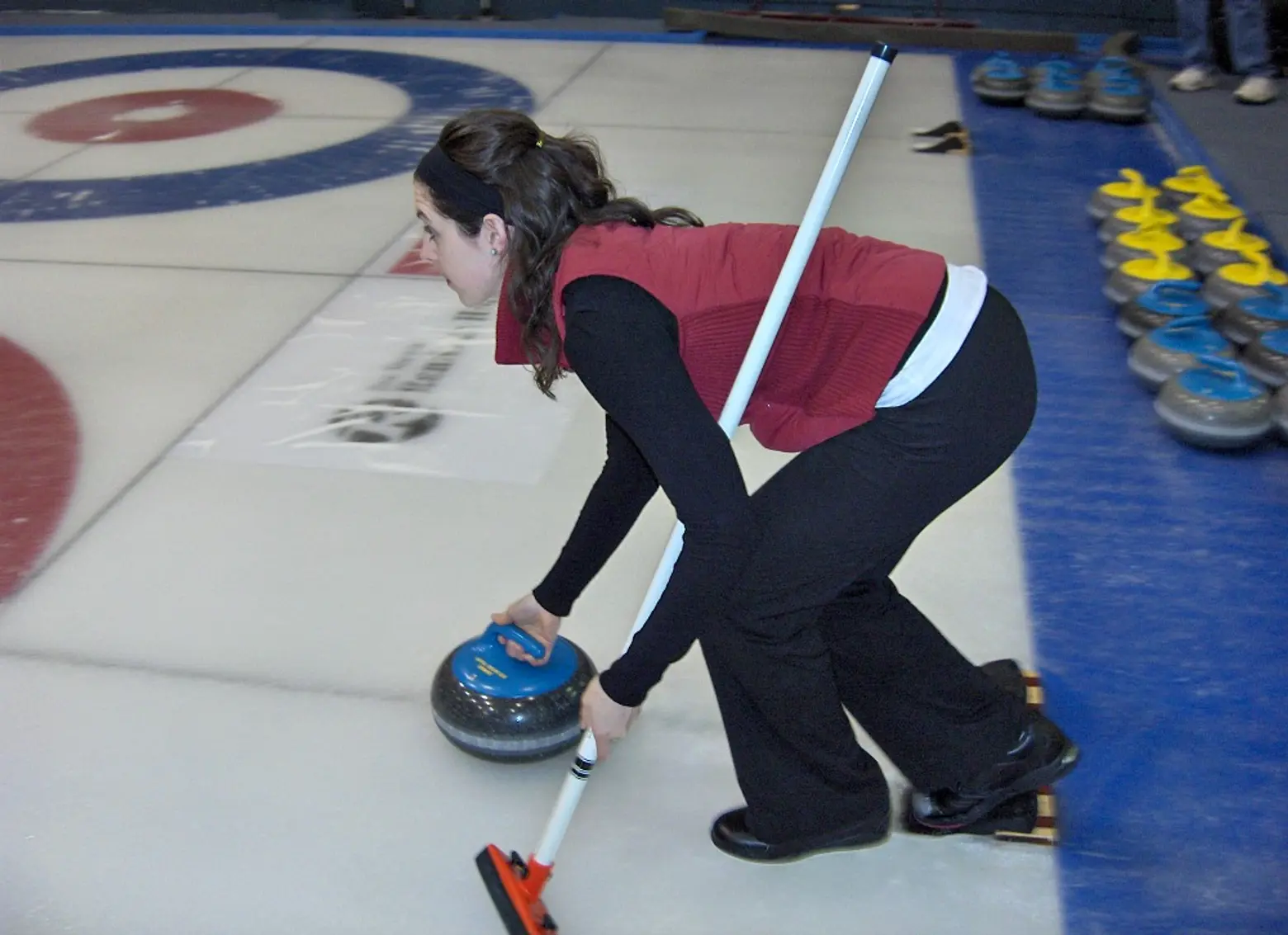 Kendall in Bismarck
Kendall in Bismarck
What makes the LeFrak Center at Lakeside great for curling?
Dean: Wendy Peace, Lakeside’s Curling Program Director, has been enthusiastic about it. The big challenge we have there is the conditions. That’s always the challenge when you are not playing on dedicated curling ice. Lakeside did a good job of getting past those obstacles. I think it’s perfect for the [Brooklyn] crowd. I spend a bit of time in Williamsburg myself, and whenever I’m there and talk to people–and I will try to sell curling all day–they are all interested.
Kendall: The benefit of having designed the leagues at Lakeside is that you get instructors. They have instructional leagues, so you’re not just left to figure it out after you’ve been taught at a two-hour open house. Each week, there are experienced curlers helping teach you and they keep adding things you should work on and improve. Luke and I didn’t get that when we started curling, and that would have been very helpful. We’ve seen amazing improvement from the people we’ve been helping.
Dean, you have an extensive curling resume. How does one become a Curling National Champion?
Dean: I grew up in Ontario and went to school in Montreal. I moved to New York in ’91 and started working in advertising and decided I couldn’t fit curling in. For a long time I didn’t play. I went to Michigan and came back to the East Coast in ’06 and decided I wanted to get back into curling. In 2012, my team won the national championships, so we represented the U.S. at Worlds in Basel, Switzerland and that got us a spot in the Olympic Trials where we finished third. Now, I’m in the Nationals this year skipping a team.
Kendall and Luke, how you both began curling is similar to how some New Yorkers are trying the sport. Can you share your curling story?
Kendall: Luke and I started curling in Bismarck, North Dakota when we were in our late 20s in 2007. Our friends needed two people for a team to learn how to curl the day of the open house. They told us about it the day of the event and said, “Are you available in two hours?” And we said ok. We showed up and were hooked. Then for work we ended up having to move to the West Coast, in and around Portland, Oregon. That was sort of a setback because in Portland they didn’t have a dedicated ice facility, but we were able to go up to Canada quite a bit and curled in British Colombia. We moved to New York two summers ago, but it was hard to get to the clubs during the week to participate in a league. Now with curling in Brooklyn and helping out at the South Street Seaport, it’s brought curling back to us on a weekly basis.
Luke: We got married despite curling together.
What does sharing curling with New Yorkers mean to each of you?
Dean: I’m a relentless promoter of it. I play it, I love it, I grew up with it, and I missed it all those years I was away. I honestly believe there are few sports that can bring people together the way curling can. In my club in New Jersey, we have Democrats and Republicans and different income levels and it all works. It’s not atypical of curling clubs in general.
Luke: Kendall and I have come a long way as teachers of curling in just a couple of years. We’ve really taken the time to think about what we struggled with and what would make it easier for people to learn quickly, and it’s paid off. We had a really good mentor in Bismarck who took us to tournaments and was a positive role model for curling. He really stoked our passion for the sport. We have a little bit of a dream that we could get someone hooked on curling like that.
Kendall: We had no idea we would be so passionate about curling. Luke and I both work really well with beginners, teaching them the fundamentals to get up on your feet and throw your first stone. We like helping people learn the sport and find something that brings them joy or excitement. When people leave the first session, you can tell that they just found something they really think they like doing. You know when they leave that they’re going to come back.
***
[This interview has been edited]
Photos via CurlNYC unless otherwise noted
